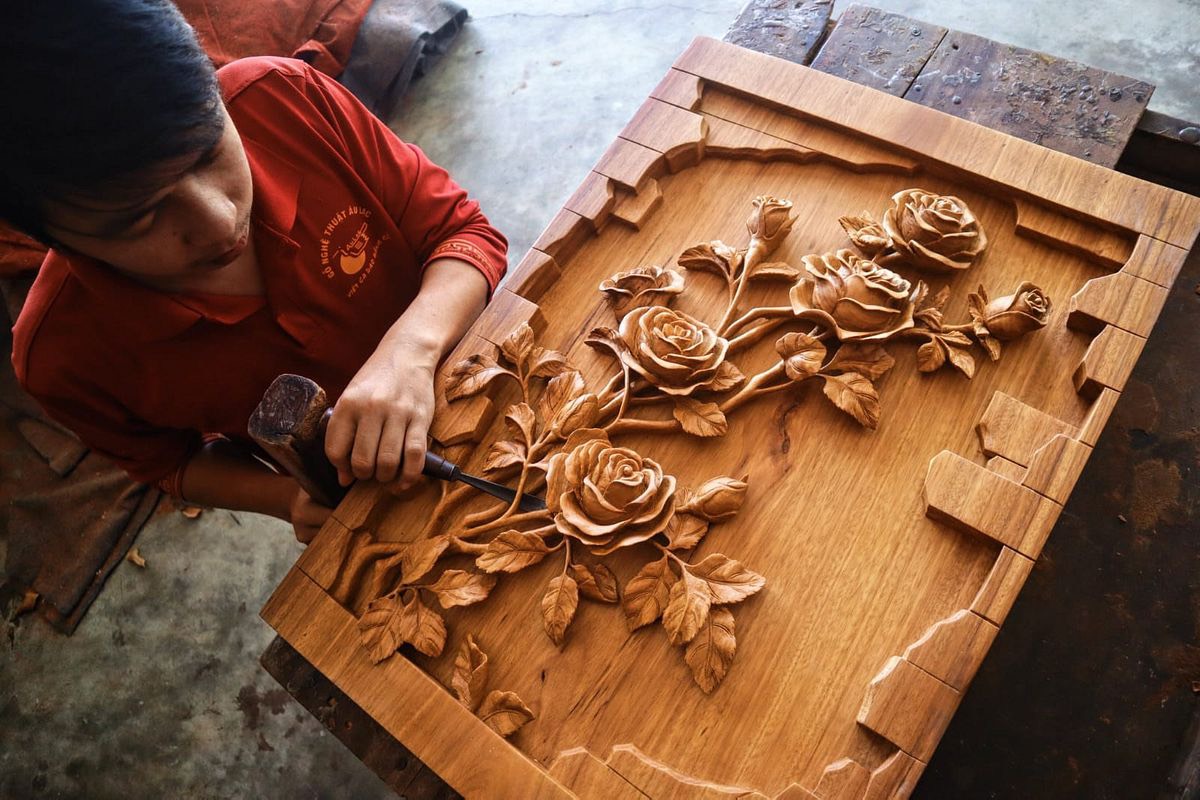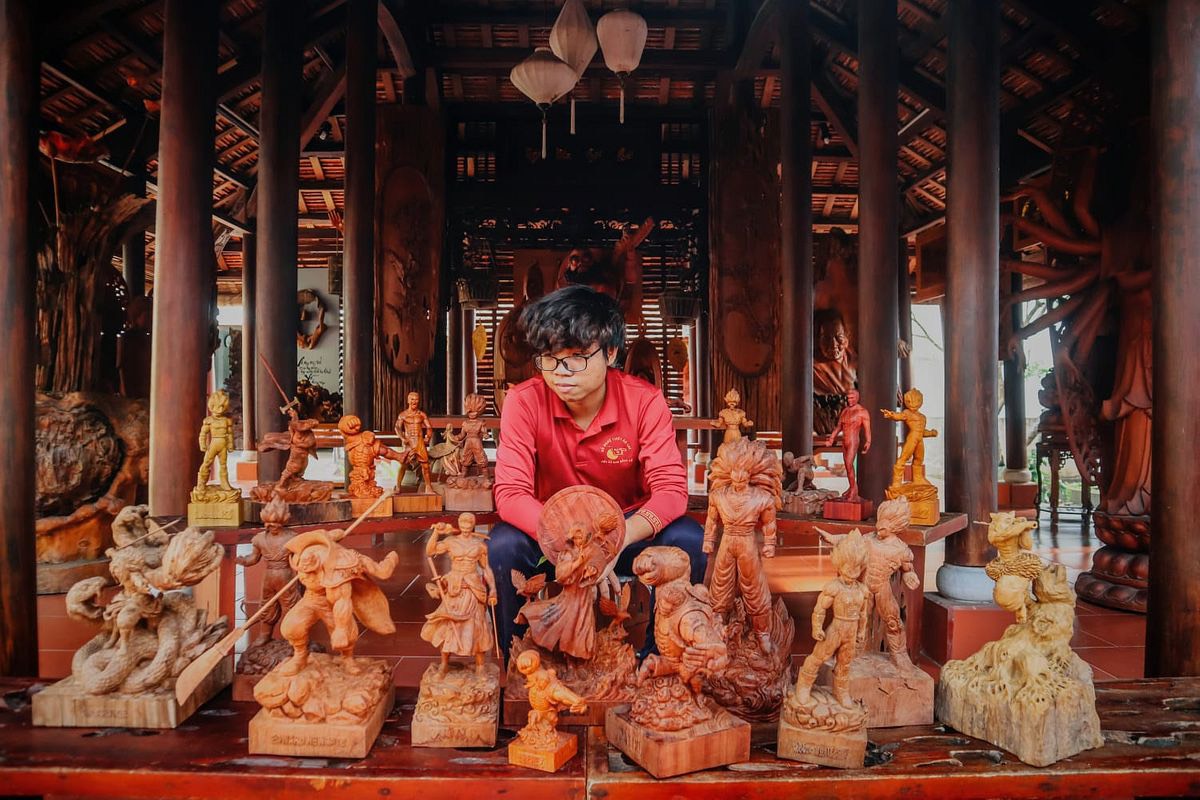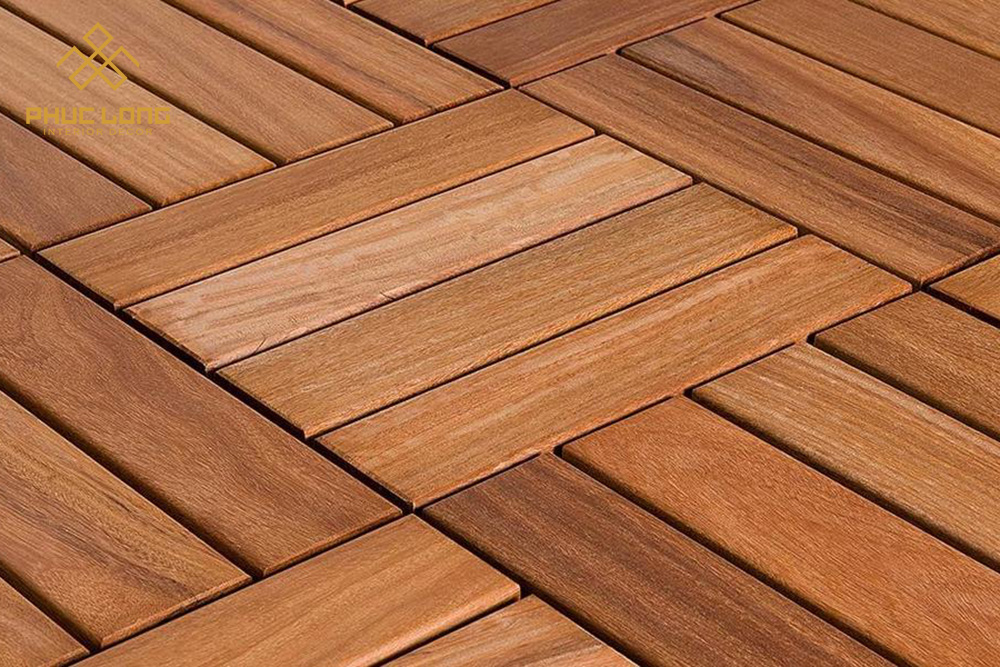In the realm of craftsmanship, Vietnamese wood carving seamlessly blends culture, history, and skill. Rooted in tradition, the wood choice is pivotal in crafting exquisite pieces. Join us on a journey to explore Vietnamese wood carving, where craft, culture and tradition converge. In this article, we’ll delve into the intricate world of Vietnamese wood carving, revealing its history, woods used, and remarkable products showcasing this artistry.
An Artist is Carving Wood
What is Vietnamese Wood Carving?
Vietnamese wood carving or “điêu khắc gỗ” in Vietnamese is the process of removing material from a piece of wood to create a desired shape or design. It is a traditional craft that has been practiced for centuries in Vietnam. Vietnamese wood carving is a centuries-old art form that is characterized by its intricate detail and rich symbolism. Woodcarvers use a variety of tools to create their works, including chisels, knives, and saws. They often use traditional Vietnamese woods, such as teak, mahogany, and rosewood, these wood is harvested from the forest or through processing processes to form many wood carving products. This art form is deeply rooted in Vietnamese culture and has evolved to become a unique and cherished tradition.
Vietnamese wood carving has a long and rich history. It is believed to have originated in the Dong Son culture, which flourished in Vietnam from the 3rd century BC to the 1st century AD. Dong Son wood carvings were often used to decorate weapons, shields, and other objects.
Vietnamese wood carving reached its peak during the Nguyen dynasty (1802-1945). During this period, woodcarvers created some of the most beautiful and intricate wood carvings in Vietnamese history. These woodcarvings can be found in temples, palaces, and other important buildings throughout Vietnam.
Today, Vietnamese wood carving is still a thriving art form. Woodcarvers can be found all over Vietnam, creating works for both traditional and contemporary purposes. Vietnamese wood carving is a unique and beautiful art form that is a testament to the creativity and skill of Vietnamese artisans.
Read more: What is a Vietnamese Wooden Bed? 8 Type of Wood for Making Beds in Vietnam
What Kind of Wood is Vietnamese Wood Carving Made On?
The choice of wood in Vietnamese wood carving is akin to selecting the canvas for a painting – it can make or break the final masterpiece.Woodcarvers use a variety of woods to create their works, each with its own properties. While a variety of woods have been used over the centuries, some of the most common woods used in Vietnamese wood carving include:
| Wood type | Description | Usage |
| Red Doussie | This hardwood possesses a captivating deep red hue, symbolizing vitality and strength. It’s renowned for its natural durability, making it an ideal canvas for intricate carvings. | Used in temples, shrines, and homes for preserving the history and culture of Vietnam. |
| Parashorea chinensis | Also known as ‘Thị wood’ it boasts a straight grain and fine texture, allowing artisans to carve intricate designs with precision. | Preferred for creating detailed sculptures, providing a stable foundation for the artist’s vision. |
| Teak | Renowned for its strength and durability, teak has been a favorite choice for Vietnamese wood carvers. Its natural oils and resistance to pests and decay make it a perfect medium for intricate carvings. | Transforms into timeless pieces cherished for generations. |
| Mahogany | Mahogany, with its golden or pinkish hue and fine grain, provides an excellent canvas for intricate carving. It’s often chosen for its aesthetic appeal. | Selected for its beauty and used to create pieces that adorn spaces with elegance. |
| Rosewood | Known for its rich, dark color and exquisite grain patterns, rosewood is prized for its beauty and resilience. | Cherished by Vietnamese wood carving enthusiasts for its ability to preserve intricate details and create decorative items. |
The type of wood used in Vietnamese wood carving is important for both the aesthetic and functional aspects of the work. The different woods have different properties that can affect the carving’s strength, durability, and appearance. Woodcarvers carefully select the right wood for each project to ensure that the finished product meets their requirements.
- Strength and Durability: Teak and mahogany are chosen for their durability, ensuring intricate details remain intact for generations. Ideal for enduring and decorative pieces.
- Aesthetic Appeal: Rosewood and red Doussie are celebrated for their beauty, with rich colors, intricate grains, and natural luster. Preferred for creating opulent and elegant decorative items.
- Versatility: Bamboo and pine offer versatility, adaptable to a wide range of projects, from delicate carvings to larger, functional pieces, guided by the woodcarver’s skill and vision.
Read more: What are Vietnamese Wooden Sandals? Basic Features of Vietnamese Wooden Sandals
Products That Apply Vietnamese Wood Carving
Vietnamese wood carving has a remarkable ability to transcend the boundaries of function and decoration, turning everyday objects into art pieces. Wood carving paintings, furniture ,and statues are some noteworthy creations that showcase the diversity of this craft.
| Wood Carving Category | Description |
| Wood Carving Paintings | Vietnamese wood carving paintings are singular and three-dimensional marvels. These creations become vibrant storytellers through their intricate relief work, transcending mere snapshots of moments. |
| Wood Carving Vases | Adorned with ornate floral motifs, intricate patterns, and scenes from Vietnamese folklore, these vases transform into captivating centerpieces, carrying narratives of beauty and tradition. |
| Wood Carving Beds | Wood carving beds elevate the act of sleep into an opulent experience, with headboards and footboards serving as exquisite canvases, recounting stories of love, family, and heritage. |
| Wood Carving Statues | Renowned for their astonishing detail, Vietnamese wood carving statues represent religious figures, historical heroes, or cultural symbols. Each curve and line is meticulously carved, making these statues both decorative pieces and objects of reverence. |
| Decorative Panels | Decorative panels intricately carved with scenes from nature or mythological stories are another popular product of Vietnamese wood carving. These panels are used to adorn homes, temples, and even boats, adding a touch of elegance and tradition to any space. |
| Musical Instruments | Traditional Vietnamese musical instruments, such as the đàn tranh (zither) and đàn bầu (monochord), often feature intricate wood carvings. These carvings not only enhance the instruments’ aesthetics but also contribute to the quality of sound produced. |
| Architectural Details | In Vietnam, wood carvings are not limited to smaller objects. They are also used to decorate the facades of temples, pagodas, and ancestral houses. These architectural details showcase the mastery of Vietnamese wood carvers and add a distinctive charm to the country’s architectural heritage. |
Vietnamese Wood Carving Products
In Conclusion
Vietnamese wood carving or “điêu khắc gỗ” is more than just a craft, it’s a testament to the enduring spirit of Vietnam. It’s a journey through time, a living tradition, and a way to preserve the rich culture and history of this remarkable nation. With its exquisite craftsmanship and timeless beauty on so many products, Vietnamese wood carving will undoubtedly continue to captivate the world for generations to come. So, the next time you encounter a piece of Vietnamese wood carving, take a moment to appreciate the skill and artistry that went into creating it, and the centuries of history it represents.






